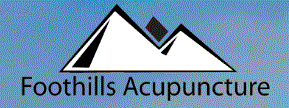Lakewood has 26% of Jefferson County’s overall population but has 50% of its homeless population. The Metro Denver Homeless Initiative (MDHi) point-in-time data provide the homeless point-in-time data for Lakewood as well as Jefferson County.

Source population: https://worldpopulationreview.com/us-cities/lakewood-co-population
Source homeless population: https://www.mdhi.org/pit
The most common explanation for the rise in homelessness is the lack of affordable housing. However, that explanation applies equally across the front range. So why does Lakewood have so many of Jefferson County’s homeless?
According to the Strategic Housing Study presentation, Lakewood has 1.2 more homes per job than economically growing areas like Denver. That pushes Denver employees to live in areas like Lakewood. Lakewood then becomes a so-called bedroom community to cities with jobs.
From a homelessness point of view, Lakewood may be so affordable and attractive that Denver employees are displacing local residents. But Lakewood is not uniquely positioned that way.
The Strategic Housing Study also pointed out that “housing value is not unusually high” in Lakewood.
So affordable housing cannot be cited as the reason that Lakewood has so much of Jefferson County’s homeless population.
Denver is also pushing its homeless to Lakewood. Lakewood homeless have said they needed to move because Denver got too dangerous. Lakewood’s position next to Denver could explain the higher population, especially along Colfax Avenue. The solution to this would seem to be increased enforcement along Colfax, a solution that residents along Colfax have argued is not occurring (see 10 min mark https://lakewoodspeaks.org/meetings/570)
Another factor commonly cited for high homeless populations is high overall population density. In other words, big city = big homeless. Lakewood is the largest city in Jefferson County, even though it only accounts for 30% of the population. Likewise, Denver has almost 70% of the metro area’s homeless despite less than a third of its total population.
If this is the problem the solution would be slower population growth or a shift to more jobs-based growth. This solution was rejected by Lakewood. In fact, the Strategic Housing study cites the possible goal of maintaining Lakewood’s status as the largest city in Jefferson County.
Prior to the affordable housing crisis, homelessness was attributed to a variety of other problems, such as economic difficulties, mental health and substance abuse.
In their 2019 report advocating for housing, the Colorado Coalition for Homeless cite a 1988 statistic that 71% of people experiencing homelessness have a mental illness or post-traumatic stress, and that 58% have substance abuse disorders. Presumably their experience shows that the 1988 statistic is still relevant, although a 2011 study of the Substance Abuse and Mental Health Services Administration (SAMSHA) shows only 30-50% of chronically homeless have mental health or substance abuse problems. An SMI Advisor report cite a 66% number, saying it is “not surprising that 2/3 of surveyed homeless adults in the U.S. have mental health and/or substance use disorder.”
Mental health and/or substance abuse problems are also not unique to Lakewood.
The MDHi report shows the number one reason for being homeless was a “relationship/family breakup” or “unable to pay rent”. MDHi assert the reason for homelessness as lack of affordable housing but do not give relevant background research. The many reasons a person is unable to pay the rent/mortgage are unexplained although there are unrelated income statistics provided. This reason, again, does not explain the Lakewood disparity.
The MDHi report is “through the lens of racial equity and lived experience” and shows there are “historic funding opportunities” available.
These numbers suggest that reasons for the high rate of homelessness in Lakewood, such as affordable housing or substance abuse, needs to be examined from a policy perspective for what may be unique to Lakewood.





